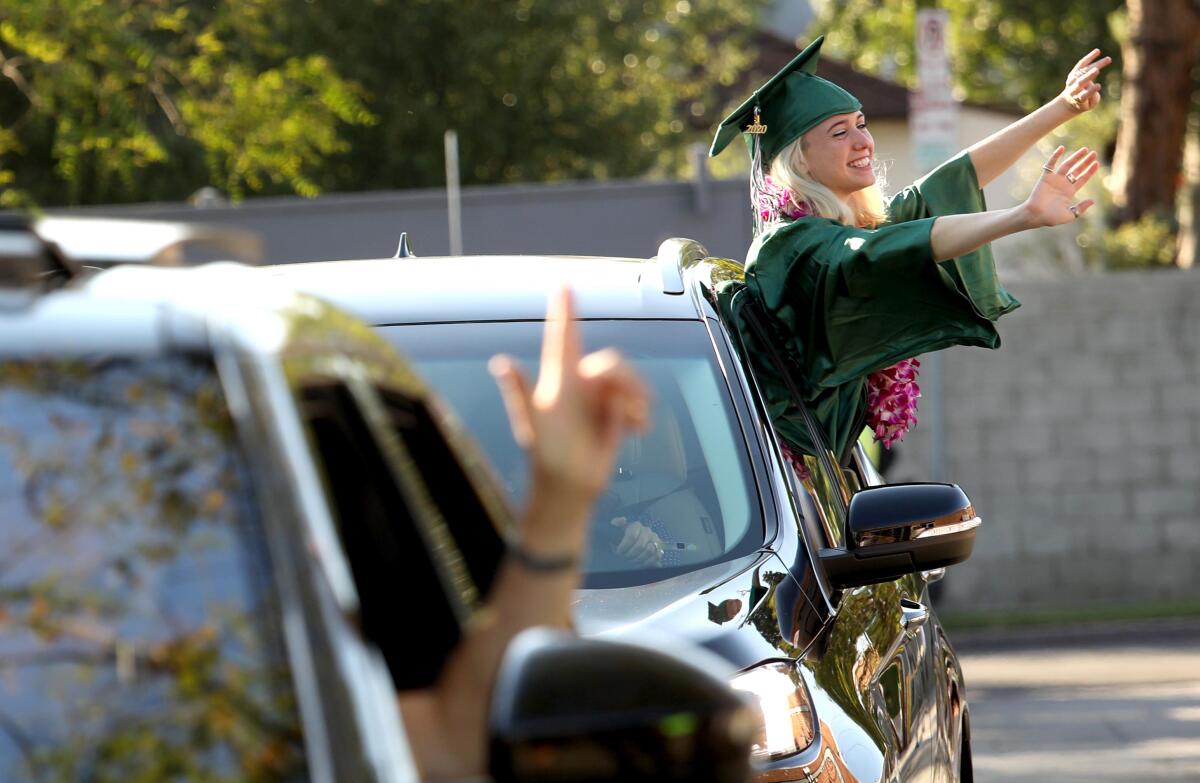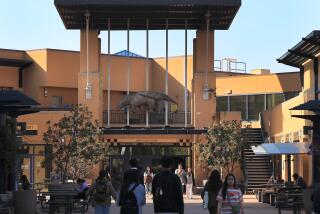Fewer high school graduates enrolled in college this fall amid COVID-19 pandemic, study shows

The number of students enrolling in college immediately after high school plunged nearly 22% this fall over last year, hitting high-poverty, urban schools hardest — a likely reflection of the coronavirus-related toll on higher education plans, according to a national survey released Thursday.
The survey by the National Student Clearinghouse Research Center found that the drop-off varied substantially by institution, with community colleges showing the largest enrollment decline among low-income students and public four-year universities the lowest.
In California, that pattern appears to hold, although not as dramatically. The report did not break out state data, but California’s higher education systems have tracked similar information.
The California Community Colleges system expects an average decline across 116 campuses of 5% to 7%, but enrollment at the nine-campus Los Angeles Community College District is down by about 10% this fall compared with last year — roughly 270,000 students compared with 300,000 last year.
The picture is mixed at the 23-campus California State University system, with enrollment growing at Southern California campuses such as Fullerton, Northridge and San Diego, and dropping among some in the north, including San Francisco, Chico, and Humboldt. While systemwide enrollment is at a record high — in large part due to transfer and continuing students — first-time freshman enrollment was down 6% systemwide compared with last year.
Photos look back at 2020’s wild ride in the Golden State.
Overall, University of California enrollment of new first-time undergraduates is projected to increase by 2.5% over fall 2019, rising among in-state students and declining among nonresidents.
The report’s data supports what many college counselors in underserved neighborhoods see firsthand.
“Has there been a drop in our graduates enrolling in college last fall? Overwhelmingly, yes,” said Heather Brown, a college counselor at Los Angeles High School, which serves mainly low-income Latino and Black students.
Although Brown did not have precise figures for her school, she estimated that the proportion of students who applied to college in fall 2019 but did not enroll the following year may have doubled to 40%.
She said many of her students could not overcome numerous enrollment barriers: they or family members contracted COVID-19, for instance. Some left the area in search of safer surroundings or cheaper housing, while others did not have laptops or hotspots to follow up with college paperwork or attend mandatory online orientations over the summer. Many chose to work instead.
Her 2020 high school salutatorian, she said, had been admitted to USC with an $80,000 financial aid package but nearly missed the deadline for accepting the offer because he was working at a construction site in the Antelope Valley after graduation to help his family make ends meet. She hunted him down and helped him complete his paperwork; he is now enrolled at USC.
“Mentally, they got knocked off their pathway and got shifted to a whole other life,” Brown said of her students.
Gov. Gavin Newsom has announced a stay-at-home order affecting most of California.
The research center used preliminary data as of Sept. 18 to estimate the immediate enrollment rates of graduates from more than 2,300 high schools with differing income, racial and neighborhood characteristics. It was not clear how many California high schools and colleges participated.
“Based on preliminary data, there is little evidence that COVID-19 impacted high school graduation,” Doug Shapiro, the research center’s executive director, said in a statement. “However, the pandemic impacted high school graduates in their immediate college enrollment, and those from high poverty, low income, and urban high schools have been hit the hardest. The enrollment gaps appear to be widening because of COVID-19.”
Brown said high school graduation rates may have been unaffected by the pandemic because many schools chose not to fail students last spring amid the abrupt shutdown of campuses and move to online learning. That may change this year, she said, as schools report handing out more Ds and Fs than usual.
The 21.7% decline in immediate college enrollment of high school graduates in fall 2020 was nearly eight times the pre-pandemic loss. Overall, the percentage of high school graduates nationally who enrolled in college dropped to 27.7% from 35.5% the previous year.
And the neediest students struggled the most. College enrollment of graduates of high-poverty high schools dropped 32.6% compared with 16.4% at low-poverty schools. In addition, enrollment fell by 26.4% at schools with large proportions of underrepresented minorities compared with 18% at low-minority high schools, and decreased 25.1% at urban schools,19.8% at suburban schools and 18% at rural high schools.
More to Read
Start your day right
Sign up for Essential California for news, features and recommendations from the L.A. Times and beyond in your inbox six days a week.
You may occasionally receive promotional content from the Los Angeles Times.









